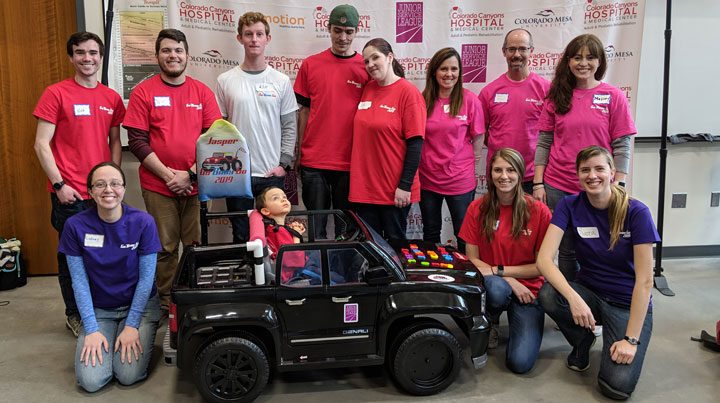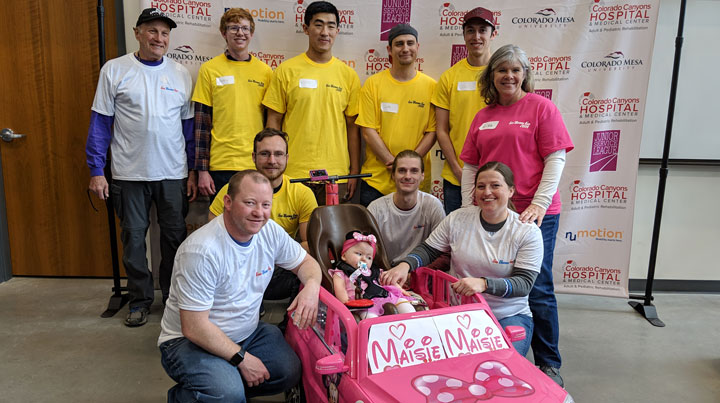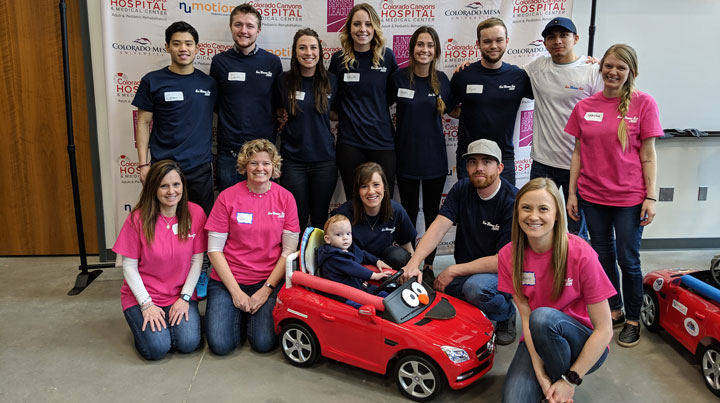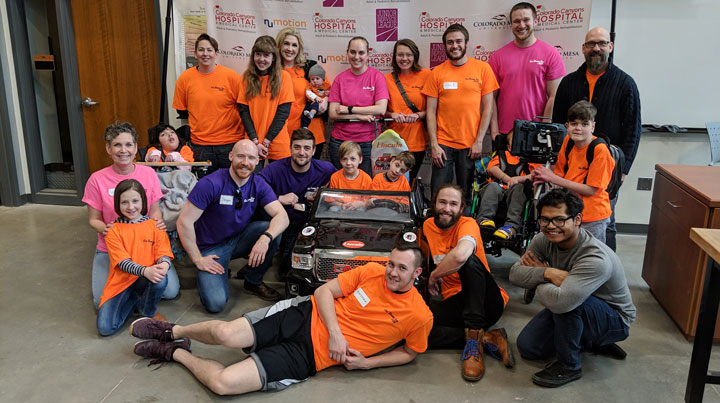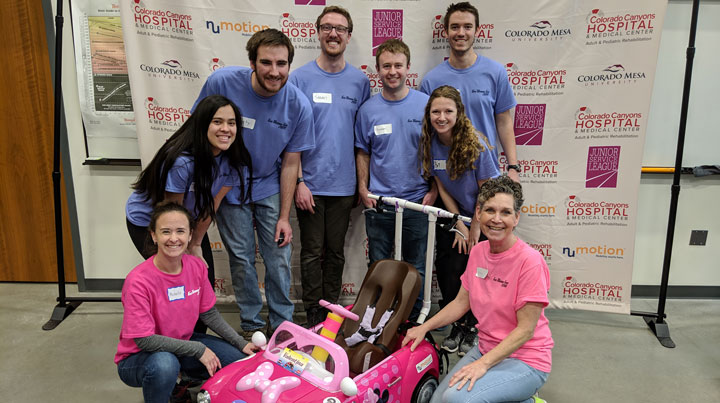Fourth annual Go Baby Go impacts students' and children's lives
Confluence Hall was filled with squeals of delight and the squeal of tires at the fourth annual Go Baby Go.
Go Baby Go brought together CMU faculty and students, Colorado Canyons Medical Center, Pediatric Rehabilitation therapists, and local families to give six children the gift of mobility.
The event is a culmination of preparation that begins several weeks in advance including efforts to match specific mobility needs with therapeutic designs engineered to each child.
Therapists identified children they work with who would benefit most from independent mobility. They then chose ride-on, electric cars based on the child’s needs. The cars, donated by NuMotion, varied from a bright red firetruck to a pink Minnie Mouse Benz and a black GMC Denali.
Once the cars are on campus, CMU engineering faculty and the Society of Women Engineers formed teams of volunteers for each child, and assigned a lead student design officer.
Most teams met twice a week for at least a month leading up to the event. The team work sessions were at the Confluence Hall project labs, where students could access tools and faculty guidance. Teams were comprised of engineering students and students from other disciplines, including business, psychology, computer science and teacher education. There was even a team of all freshmen, who each have already committed to volunteering for next year’s Go Baby Go.
“I volunteered to invest my time in this project because all kids should have an opportunity to move with their peers,” said freshman mechanical engineering student Jacqueline Linn. “This project was especially important to me because my career goals include creating better prosthetics and braces for people like Axel who don’t have optimal limb function.”
Students worked together adapting the car to the needs of the child. They rewired foot controls and hand buttons, added parent steering and rewired and moved the master controls to the back of the vehicle.
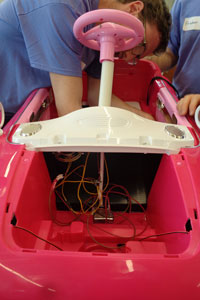
“Our students exercise creativity when adapting the cars,” said Assistant Professor of Mechanical Engineering Sarah Lanci, who is also the CMU Go Baby Go event coordinator. She said one team 3D printed gears and welded a structure together to adapt a part of their car. “They find elegant mechanical solutions to complex people problems.”
Another team added a magnetic sheet to the hood of their car so that they could stick magnetic numbers and letters to it. Their assigned child has autism and loves numbers and letters, so they incorporated those into the car to entice the child to want to ride in it.
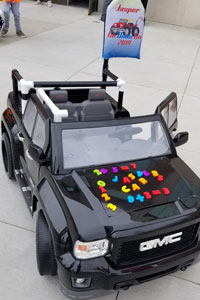
The day of the event students worked with therapists to build up physical supports, harnesses and seatbelts — before the children took their new car for a spin.
Lanci said one of the most rewarding outcomes of the event is seeing a child's reaction when they start their car for the first time and seeing how that impacts the students.
“The best part of the day is having a finished car for the child to take home,” said sophomore mechanical engineering student Tyler Stump. “Seeing a smile on their face as they get into the car and realize it belongs to them — it’s the most joy I’ve ever seen.”
In addition to the fifth annual Go Baby Go event next spring, there will be a fall event for the first time called Go Baby Go Tune-Up. At the fall event, families from past Go Baby Go events can bring in their car for a tune-up and adjustments.

